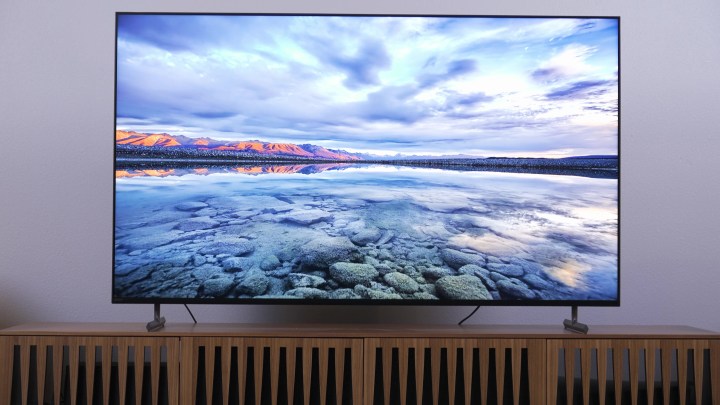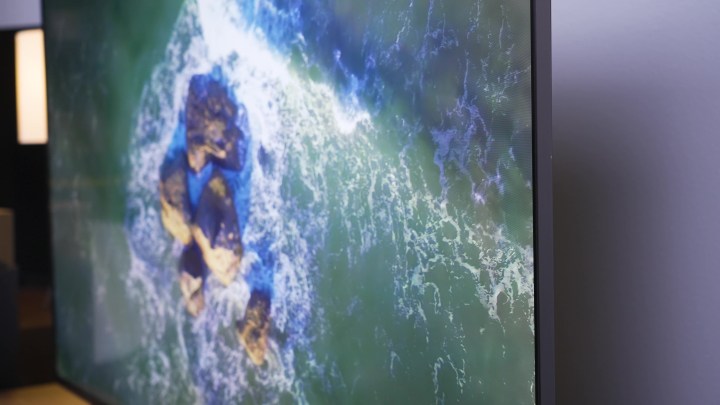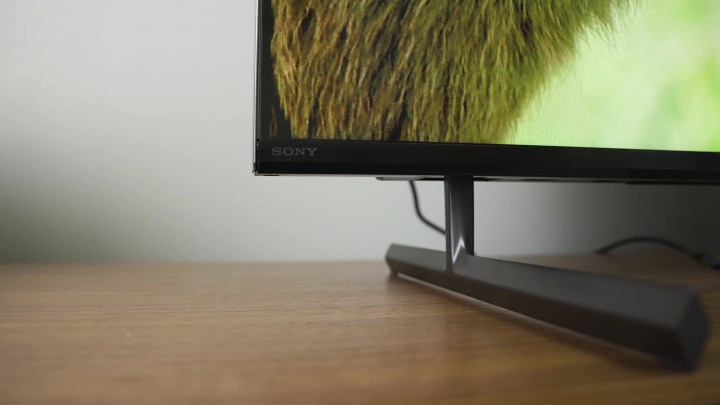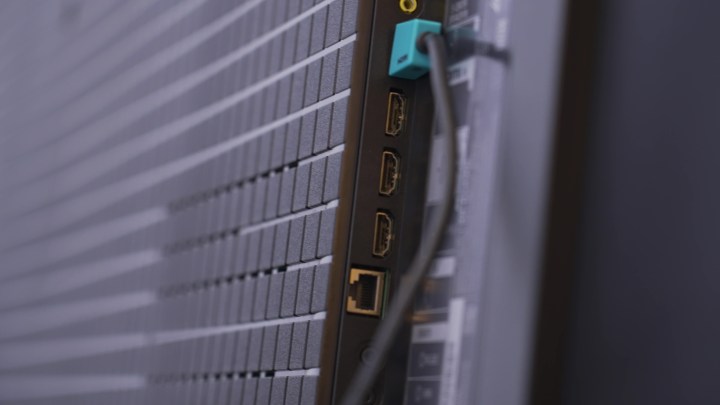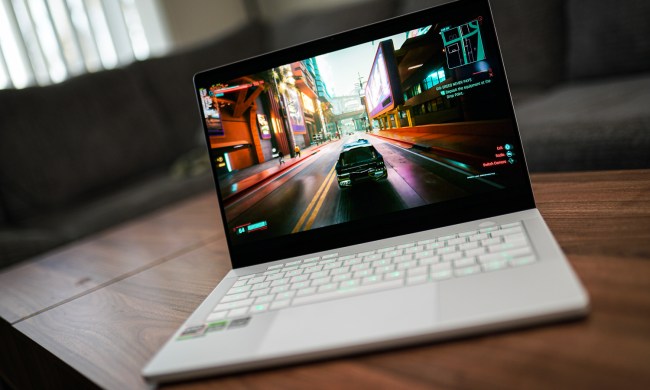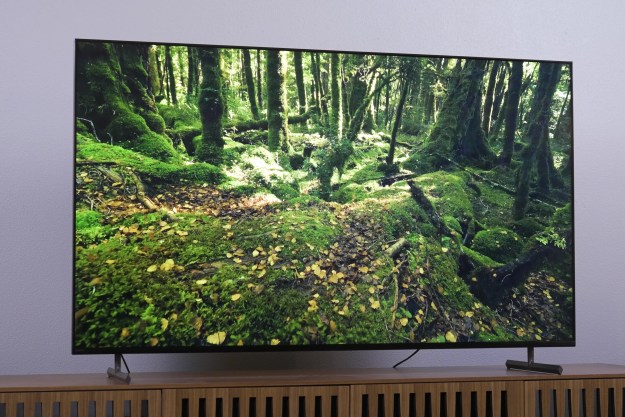
- Punchy HDR performance
- Oustanding color and grayscale accuracy
- Excellent motion handling
- Solid value
- Minimal blooming/halo
- Unimpressive sound
Going into this review, I was prepared to lay into the Sony X90L with some pretty stiff criticism. On paper, the Sony X90L didn’t appear to be prepared to ward off competition from such value hits as the TCL QM8 and Hisense U8K. Now that I’ve measured the Sony X90L and watched it for almost three weeks straight? Well, you are definitely going to want to read what I have to say.
Video review
A hard sell
The X90 series has long been Sony’s value proposition TV series. It’s historically offered much of what there is to love about a Sony TV — like its processing and smooth motion — at a more attainable price than some of Sony’s super-premium options. But over the past three years or so, the X90 series has been an increasingly harder sell, because Hisense and TCL have been turning out some great TVs that punch right up to the Sony X90 in terms of performance. And in some respects, they even exceed the SonyX90 while costing significantly less.
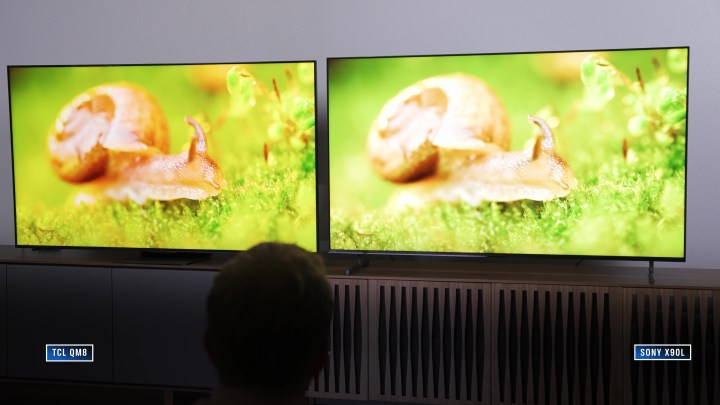
This year was looking pretty similar, at least on paper. Both the Hisense U8K and TCL QM8 have mini-LED backlight systems broken down into an impressive number of dimming zones. In theory, those mini-LED backlights and high zone counts should provide pictures with high brightness while maintaining great black levels and reduced blooming and halo effects commonly associated with LED-backlit TVs.
By comparison, the Sony X90L uses a standard LED backlighting system with significantly fewer local dimming zones — about 80 zones for the 65-inch variant I reviewed. So, reading purely from the specs sheets, it looks like the TCL and Hisense competition have better tech for less money.
Series and size details
While we reviewed the 65-inch (XR65X90L) model, our review also applies to the 55-inch, 75-inch, 85-inch, and 98-inch models in the Sony Bravia XR X90L Series.
| Screen Size | Model Number | MSRP |
| 55-inch | XR55X90L | $1,200 |
| 65-inch | XR65X90L | $1,300 |
| 75-inch | XR75X90L | $1,800 |
| 85-inch | XR85X90L | $2,800 |
| 98-inch | XR98X90L | $10,000 |
Closing the value gap
Here’s where things start to take a turn: The Sony X90 series has always been significantly more expensive than its TCL and Hisense counterparts. In 2022, the 65-inch TCL R655 and Hisense U8H had street prices that came in about $250 lower than the 65-inch Sony X90K. In 2023, the difference between the 65-inch TCL QM8 and this Sony X90L is only $100 — though, to be fair, the Sony is still about $200 more than the Hisense. But Hisense prices are so low it’s almost not fair.
It’s got picture quality elements that the TCL and Hisense competition just can’t match.
So the price gap has closed some. But, on paper, it still looks like the TCL QM8 and Hisense U8K’s backlight systems are ready to just shame the Sony.
Sony is still sticking to the line that it has long pushed about how it’s not the size of the backlight system, it’s how you use it. But as good as Sony TVs have looked with what some might call backlight systems, last year’s TCL and Hisense TVs had more impressive black levels, brightness, and reduced blooming than Sony’s X90K.
So, you can see why — even though Sony increased the local dimming zone count for the X90L, and increased the number of backlights significantly — I was skeptical and ready to read Sony the riot act because both the TCL QM8 and Hisense U8K have seemingly more advanced mini-LED backlight systems for less money. Frankly, I think a lot of folks just don’t get why Sony can’t use mini-LED systems at this level when its competition is doing so.
Then I unboxed the TV and started watching it. And folks, I do have something to say about the little bit of blooming you will see on the Sony. But, overall? If you step back and look at the big picture — view the TV in its totality — this Sony X90L TV looks fantastic for the price, and it has picture quality elements that the TCL and Hisense competition just can’t match. Not only that, but it is a lesson in how mini-LED as a backlight tech is not necessarily that magic bullet I think TV enthusiasts had hoped and expected it to be.
Brightness
Before I get into the narrative describing what this TV is like to enjoy in your home, let’s get down to the nitty-gritty.
The measurements I got paint an impressive picture of the Sony X90L’s performance potential. Without any adjustments to the Sony X90L’s Custom picture preset, SDR white balance was outstanding, with both low luminance and high luminance readings coming in below a Delta E of 2 — as a reminder, anything below 3 is considered great and not perceivable by the human eye.
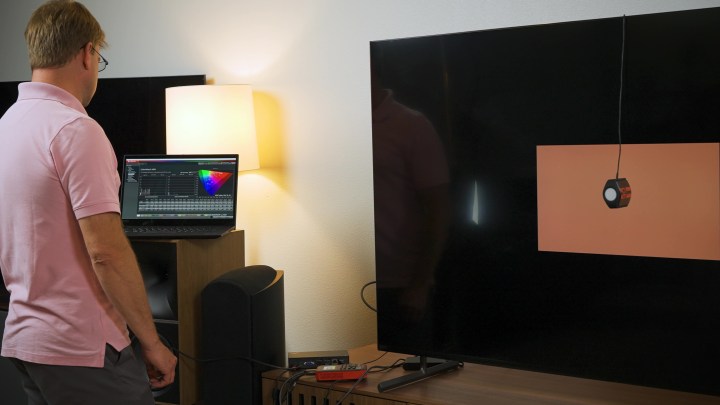
Even more impressive than that: Color accuracy in SDR was below a Delta E of 2 across the board! Now, in the Custom picture preset, the SDR peak brightness was expectedly higher than the Cinema mode, coming in at about 600 nits for a 10% window, which is more than respectable.
Side note: The Imax picture mode was, strangely enough, not nearly as accurate or pleasant to watch as the out-of-box Custom and Cinema modes.
When it comes to HDR Color, the Sony X90L was exceedingly accurate.
Moving to
When it comes to
In fact, the measurements from the Sony L were so good that I called Sony and asked point blank if a hardware calibration was performed on this TV before it was sent to me. Is this a so-called “Golden Sample?” I asked. Sony was quite clear that while it tested the TV to make sure it fit within tolerances of what it considers to be a good example of the TV, it was not altered in any way and is a good example of what customers will get when buying at retail. I have good reason to believe Sony was being truthful in its response.
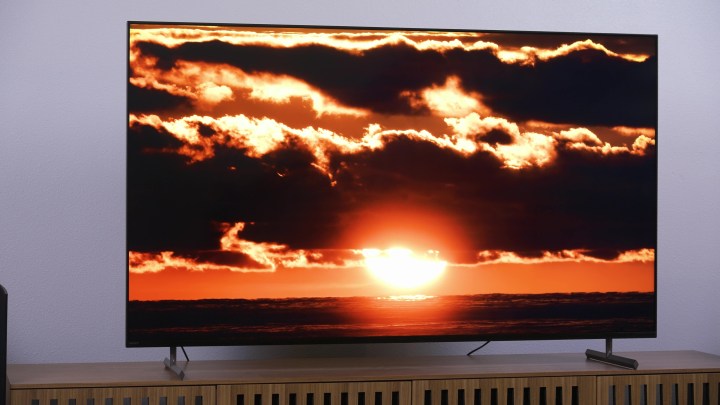
From a measurements perspective, the Sony may not appear to be as intensely bright as the charts for the TCL QM8 and Hisense U8K make those TVs appear to be. But when it comes to real-world content viewing, the X90L appears to be just as bright in most viewing situations. And when it comes to accuracy? The Sony X90L handily defeats both the TCL and Hisense. Seeing this kind of accuracy in a TV at this price is, frankly, hard to believe. I think that’s really exciting.
So at this point in the review process, the Sony X90L was looking very promising. But I wanted to see how it performed with actual content of varying types and, of course, in the back of my mind, I was concerned about how its black levels would turn out. How much blooming would we see? And would that blooming detract from the other aspects of its otherwise excellent performance?
Backlight
The Sony X90L doesn’t perform quite as well in some backlight torture tests as the Hisense U8K or TCL QM8. If we put the X90L side by side with the TCL QM8, we can see that the QM8 has a little less halo or blooming around bright objects on black backgrounds. If we turn on the closed captions when we’ve got letterbox bars, we can see that the black areas around the white captions text sees a bit of halo and bloom on the Sony, where it is almost nonexistent on the QM8. But, when you view the Sony X90L dead-on? Frankly, blooming and halo are not an issue with most content. Unlike the Sony X90K, which had blooming and halo that bothered me, the X90L is looking just fine, thank you very much. You really have to step well off-angle to see the backlight system doing its thing. But since we’re talking about off-angle performance, neither the TCL nor the Hisense has very good off-angle performance either, so it’s not like the Sony takes a significant ding in this area.
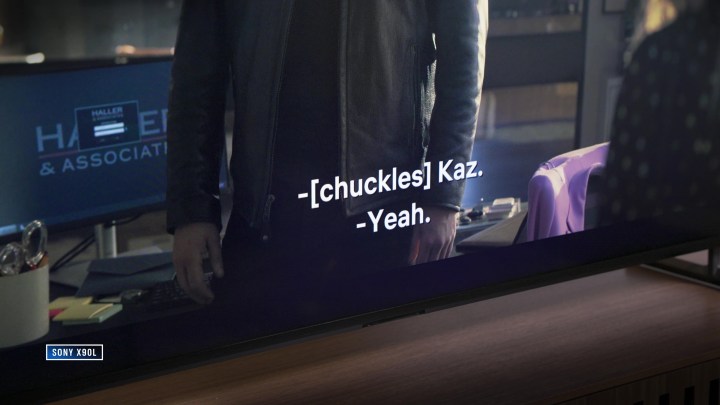
To be clear, there were times when I was watching he X90L in perfect darkness, and when I looked for it, I could see the backlight in operation. But I had to look for it with intention. Unlike many other LCD TVs I’ve tested, though, I was never bothered by what little blooming and halo I saw. And, folks, I am more easily bothered by backlight anomalies than the average viewer, based on anecdotal evidence involving friends and family who are easily annoyed by my observations while trying to watch a movie together.
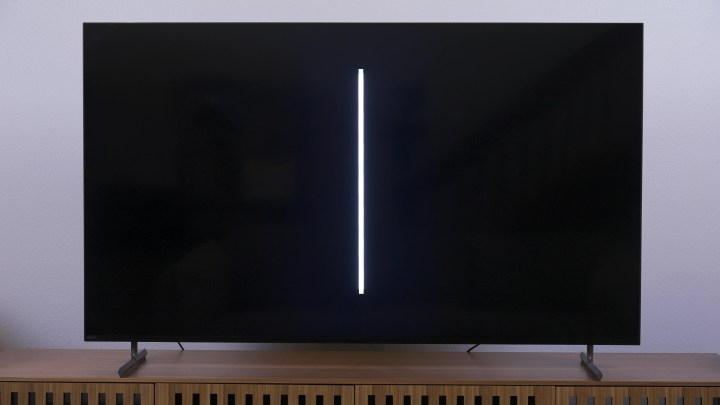
More importantly, though, the Sony X90L’s backlight is quick. The algorithm that drives it is excellent — better than other TVs in this price class, and better than many that cost more. I mean, this X90L really lends credence to Sony’s claim that what looks good on paper doesn’t necessarily translate into great picture performance. The X90L might not seem like it should look so good, but it really does.
Color
We have to move past the backlight stuff now because when it comes to color accuracy, color gradation, motion resolution, and upscaling, the Sony X90L is a cut above the competition. Sony’s processing, once again, reigns supreme. In some cases, it’s marginally better; in others, it is significantly better. When streaming content from YouTube, Peacock, Hulu —
Gaming
As for gaming — well, you guys know I don’t dive super deep into the gaming realm, but I was able to determine that input lag on the two HDMI 2.1 ports was about 19 milliseconds at 4K 60Hz, and just a touch lower at 120Hz. The TV does support VRR, but when you engage VRR, most of the processing gets scaled way back, and that includes the local dimming system, so contrast takes a significant hit. As a matter of fact,
Audio
As for sound? I suggest you consider adding a soundbar if you can. The TV’s legs allow two heights, the taller of which is enough to accommodate a low-profile soundbar. Even one of Sony’s basic bars is going to really pump up the audio for this TV. The onboard audio is passable, but I got used to having a soundbar and I just couldn’t go back.
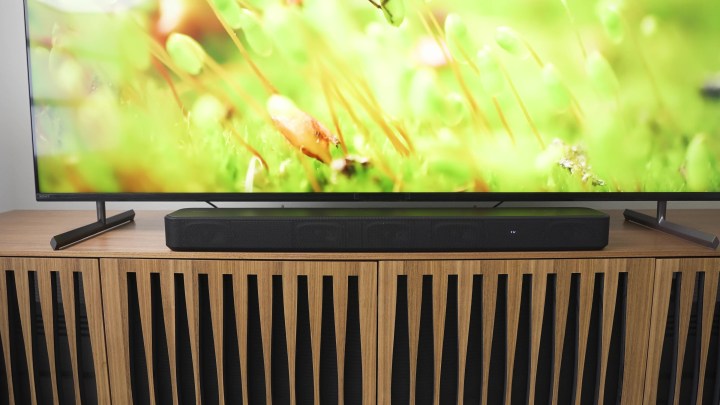
Finally, a good value
I think the takeaway for the Sony X90L is pretty clear. If you are a movie buff, and if you’re someone who values accuracy, that you like to know you’re seeing something as close to what the creator intended as possible. Then Sony X90L is worth the extra $100 or $200.
It doesn’t muscle you with brightness all the time like the TCL QM8. But when it comes to
It previously was hard for me to call the X90 Series a great value. But now, the X90L this is one of the highest values in TVs on the market — not just for Sony. This is absolutely a short-list TV for anyone, and definitely the best choice for budget-conscious videophiles. I highly recommend checking it out. I think when you see it in action, you’ll know if it is for you.

